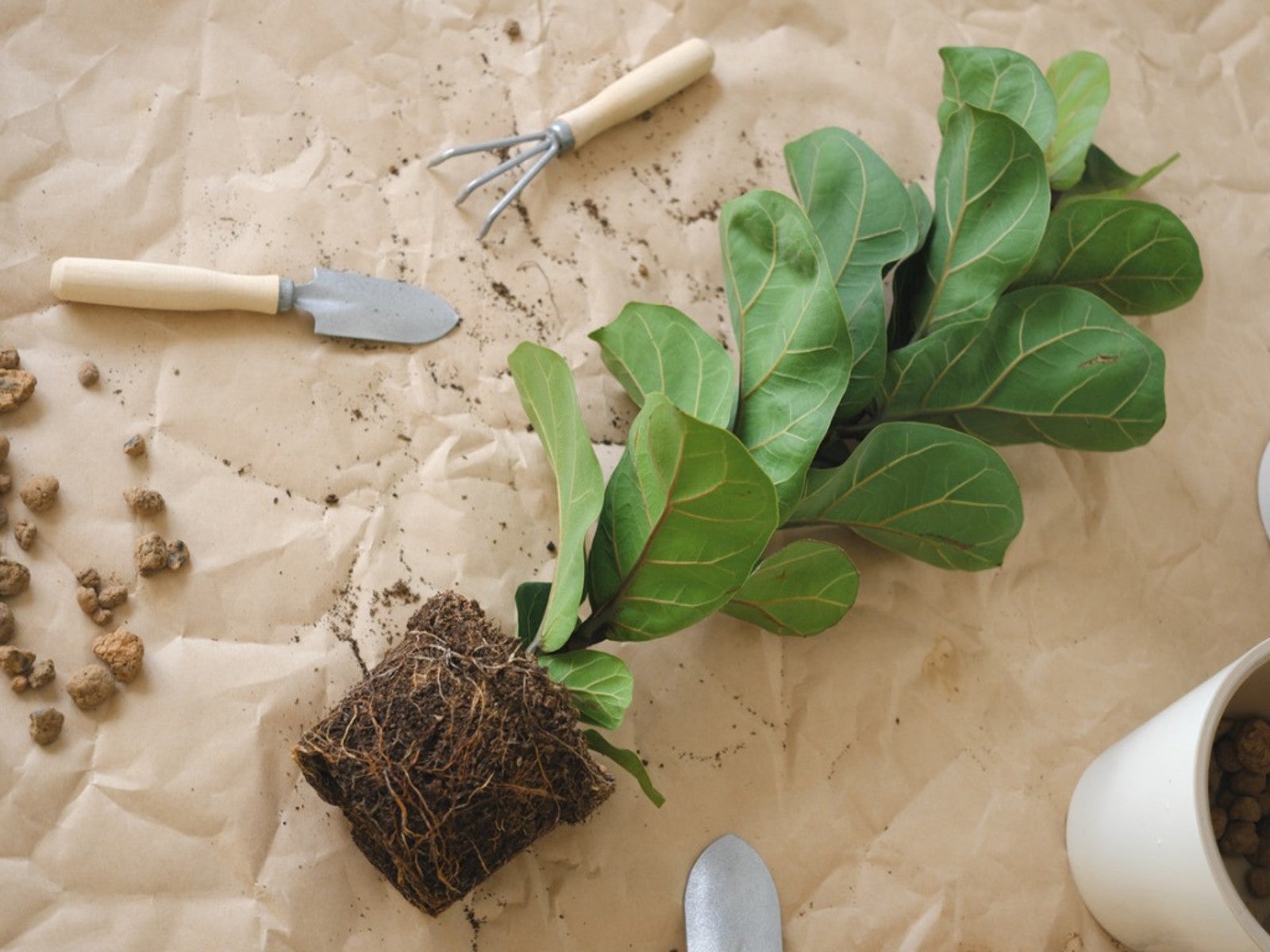Tips For Repotting Fiddle Leaf Fig Plants


It’s a rare individual who can resist the beauty of a fiddle leaf fig (Ficus lyrata). Their huge, deep green leaves with prominent veins and a fiddle-like “waist” help create a large, impressive houseplant. Fiddle leaf figs are native to low topical rain forests of western Africa.
If you are wondering how often to repot a fiddle leaf fig, there are several schools of thought. Read up on them and pick the one that suits you best.
Fiddle Leaf Fig Magic
It seems just a few years ago, the fiddle leaf fig came into the spotlight. Although it had been around for years, suddenly, this stunning houseplant was on everybody’s “must have” list. And it is a magnificent plant, growing to 6 feet (2m.) tall and creating a focal point in any room.
The fiddle leaf is native to tropical forests and requires a bright room without strong direct sunlight. It also prefers high humidity and quick-draining soil. Boggy soil will rapidly create root issues for this ficus but, when given appropriate cultural care, it grows fast to specimen height.
Repotting a Fiddle Leaf Fig
Experts are all over the map when it comes to repotting a fiddle leaf fig. Some suggest annual repotting until the plant becomes too big. Others say to repot the fiddle leaf, and most plants, every two years. But still others say that some plants like to be root bound and don’t need to be transplanted so often.
Do fiddle leaf figs like to be root bound? They do. That means that you shouldn’t go transplanting fiddle leaf figs by the calendar. Rather, wait until you see lots of roots extruding from the container’s drain holes or pushing out above the soil surface.
How to Repot a Fiddle Leaf Fig
If it’s time to repot a fiddle leaf fig, plan to act in spring. Acquire a pot just a little bigger than the one in which the ficus is currently growing, since too much room means more water than the plant can handle. It is essential that the new pot have ample drainage holes on the bottom of the pot, not the sides. If you want to place this draining pot in an ornamental container without drainage holes, that’s fine, just be sure to remove it from the ornamental pot before watering.
Sign up for the Gardening Know How newsletter today and receive a free copy of our e-book "How to Grow Delicious Tomatoes".
Most plants outgrow their pots within two years, but some houseplants do not mind being root-bound. Repot into a slightly larger pot that will not hold more water than the plant can use. The root ball should still fit fairly tightly into the new pot.
How to do it? Tip over the container and gently remove the pot from the root ball. Take a close look at the roots and clip off any that look unhealthy or dead. Delicately separate the remaining roots, then replant the fiddle leaf fig in new, pre-moistened potting soil. Be sure that the top of the root ball sits at the same level it did in the prior pot.

Teo Spengler is a master gardener and a docent at the San Francisco Botanical Garden, where she hosts public tours. She has studied horticulture and written about nature, trees, plants, and gardening for more than two decades, following a career as an attorney and legal writer. Her extended family includes some 30 houseplants and hundreds of outdoor plants, including 250 trees, which are her main passion. Spengler currently splits her life between San Francisco and the French Basque Country, though she was raised in Alaska, giving her experience of gardening in a range of climates.